Sidusglacies - ⚡️


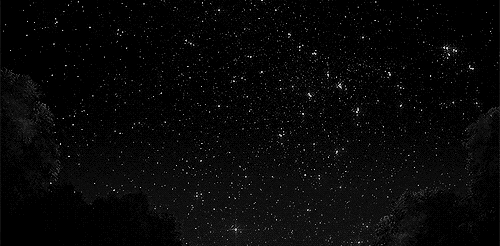
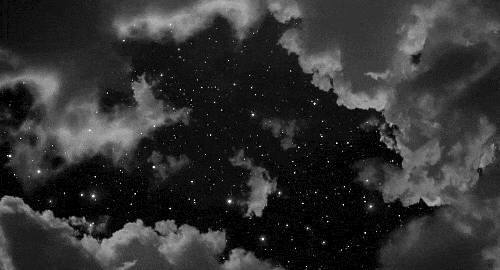
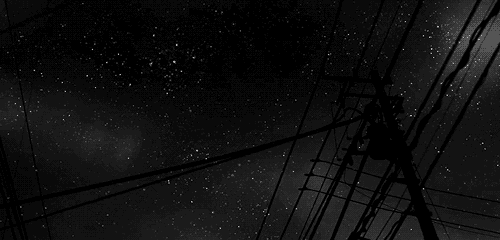
More Posts from Sidusglacies and Others
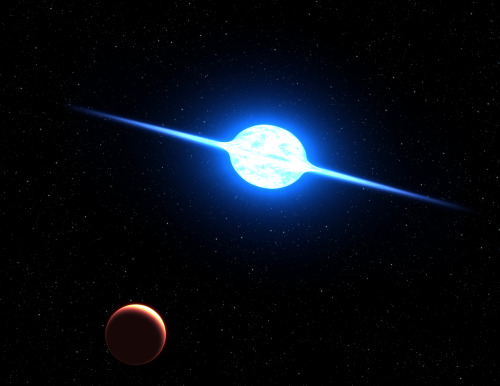
This is an artist’s concept of the fastest rotating star found to date. The massive, bright young star, called VFTS 102 rotates at about two million kilometres per hour. Centrifugal force from this dizzying spin rate has flattened the star into an oblate shape, and spun off a disk of hot plasma, seen edge on in this view from a hypothetical planet. The star may have “spun up” by accreting material from a binary companion star. The rapidly evolving companion later exploded as a supernova. The whirling star lies 160 000 light-years away in the Large Magellanic cloud, a satellite galaxy of the Milky Way.
Credit: NASA/ESA and G. Bacon (STScI)
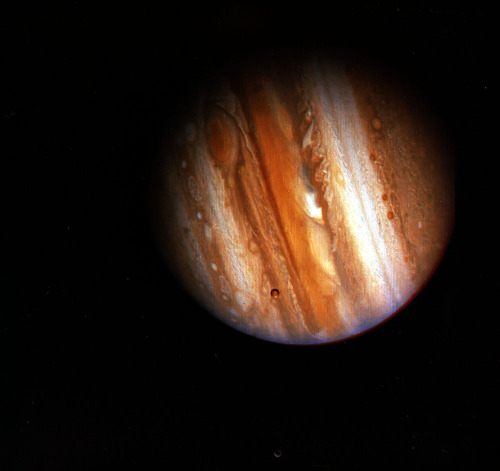
On February 5, 1979, Voyager 1 made its closest approach to Jupiter since early 1974 and 1975 when Pioneers 10 and 11 made their voyages to Jupiter and beyond.
Credit: NASA


1973 NASA art by Rick Guidice visualizes the idea of a Pioneer probe using Jupiter’s gravity to slingshot itself toward the outer planets and beyond.


Lenticular Clouds
Fiordo Última Esperanza, Magallanes & La Antartica Chilena.
do you still hear the stars?

What drives auroras on Saturn? To help find out, scientists have sorted through hundreds of infrared images of Saturn taken by the Cassini spacecraft for other purposes, trying to find enough aurora images to correlate changes and make movies. Once made, some movies clearly show that Saturnian auroras can change not only with the angle of the Sun, but also as the planet rotates. Furthermore, some auroral changes appear related to waves in Saturn's magnetosphere likely caused by Saturn's moons. Pictured here, a false-colored image taken in 2007 shows Saturn in three bands of infrared light. The rings reflect relatively blue sunlight, while the planet itself glows in comparatively low energy red. A band of southern aurora in visible in green. In has recently been found that auroras heat Saturn's upper atmosphere. Understanding Saturn's auroras is a path toward a better understanding of Earth's auroras.
Image Credit: NASA, Cassini, VIMS Team, U. Arizona, U. Leicester, JPL, ASI
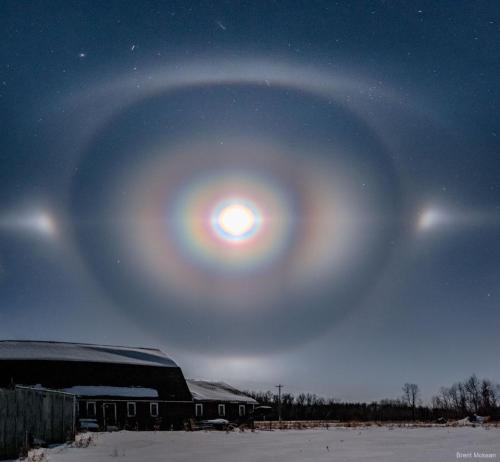
“Moon Corona, Halo, and Arcs over Manitoba” by Brent Mckean
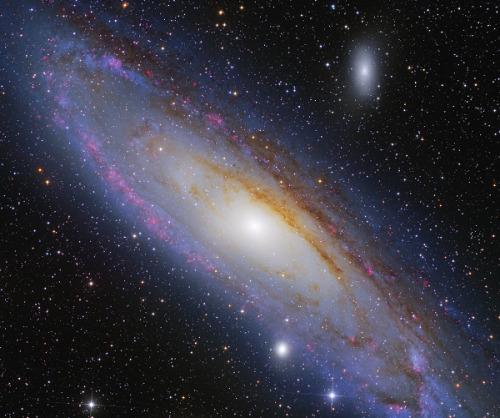
-
 hexaglows reblogged this · 1 month ago
hexaglows reblogged this · 1 month ago -
 outtafvcks liked this · 1 month ago
outtafvcks liked this · 1 month ago -
 ometochtli2rabbit liked this · 1 month ago
ometochtli2rabbit liked this · 1 month ago -
 nxt2u2 liked this · 1 month ago
nxt2u2 liked this · 1 month ago -
 in0ctobercountry reblogged this · 1 month ago
in0ctobercountry reblogged this · 1 month ago -
 tattooedbarbie14 liked this · 1 month ago
tattooedbarbie14 liked this · 1 month ago -
 overlybroken reblogged this · 1 month ago
overlybroken reblogged this · 1 month ago -
 1-800-poetic reblogged this · 1 month ago
1-800-poetic reblogged this · 1 month ago -
 lateoctobermoon reblogged this · 1 month ago
lateoctobermoon reblogged this · 1 month ago -
 deamonsworld liked this · 1 month ago
deamonsworld liked this · 1 month ago -
 aquameme reblogged this · 1 month ago
aquameme reblogged this · 1 month ago -
 tangledindream liked this · 1 month ago
tangledindream liked this · 1 month ago -
 thiscannotbegoodbye reblogged this · 1 month ago
thiscannotbegoodbye reblogged this · 1 month ago -
 delicatecrescent liked this · 1 month ago
delicatecrescent liked this · 1 month ago -
 indomitablespirits liked this · 2 months ago
indomitablespirits liked this · 2 months ago -
 sixba reblogged this · 2 months ago
sixba reblogged this · 2 months ago -
 ghostinthecabinet2 reblogged this · 2 months ago
ghostinthecabinet2 reblogged this · 2 months ago -
 ghostinthecabinet2 reblogged this · 2 months ago
ghostinthecabinet2 reblogged this · 2 months ago -
 trinityflowerbabe reblogged this · 2 months ago
trinityflowerbabe reblogged this · 2 months ago -
 la-noche-mas-larga liked this · 2 months ago
la-noche-mas-larga liked this · 2 months ago -
 la-noche-mas-larga reblogged this · 2 months ago
la-noche-mas-larga reblogged this · 2 months ago -
 allthatglittersisusuallyglitter reblogged this · 2 months ago
allthatglittersisusuallyglitter reblogged this · 2 months ago -
 monnielobo liked this · 2 months ago
monnielobo liked this · 2 months ago -
 manumoliveira reblogged this · 2 months ago
manumoliveira reblogged this · 2 months ago -
 manumoliveira liked this · 2 months ago
manumoliveira liked this · 2 months ago -
 shells-bells reblogged this · 2 months ago
shells-bells reblogged this · 2 months ago -
 daughter-of-the-rain reblogged this · 2 months ago
daughter-of-the-rain reblogged this · 2 months ago -
 daughter-of-the-rain liked this · 2 months ago
daughter-of-the-rain liked this · 2 months ago -
 intusion liked this · 2 months ago
intusion liked this · 2 months ago -
 haberenonhaberi liked this · 2 months ago
haberenonhaberi liked this · 2 months ago -
 ch-life95 liked this · 2 months ago
ch-life95 liked this · 2 months ago -
 shefeelsloved reblogged this · 2 months ago
shefeelsloved reblogged this · 2 months ago -
 ran8a reblogged this · 2 months ago
ran8a reblogged this · 2 months ago -
 ran8a liked this · 2 months ago
ran8a liked this · 2 months ago -
 xresentida liked this · 2 months ago
xresentida liked this · 2 months ago -
 akarui-bri liked this · 2 months ago
akarui-bri liked this · 2 months ago -
 ostara-27 reblogged this · 2 months ago
ostara-27 reblogged this · 2 months ago -
 eclecticpandas reblogged this · 2 months ago
eclecticpandas reblogged this · 2 months ago -
 yourlipstick-stainisaworkofart-2 reblogged this · 2 months ago
yourlipstick-stainisaworkofart-2 reblogged this · 2 months ago -
 taste-onyour-tongue reblogged this · 2 months ago
taste-onyour-tongue reblogged this · 2 months ago -
 artemisscarlett liked this · 2 months ago
artemisscarlett liked this · 2 months ago -
 infernaldiscipline liked this · 2 months ago
infernaldiscipline liked this · 2 months ago -
 annanyff reblogged this · 2 months ago
annanyff reblogged this · 2 months ago -
 silent-shameless reblogged this · 2 months ago
silent-shameless reblogged this · 2 months ago -
 jrunsthecity reblogged this · 2 months ago
jrunsthecity reblogged this · 2 months ago -
 thefirstseaofrhye liked this · 2 months ago
thefirstseaofrhye liked this · 2 months ago -
 amazing-jayce reblogged this · 2 months ago
amazing-jayce reblogged this · 2 months ago -
 insomniac21 liked this · 2 months ago
insomniac21 liked this · 2 months ago
